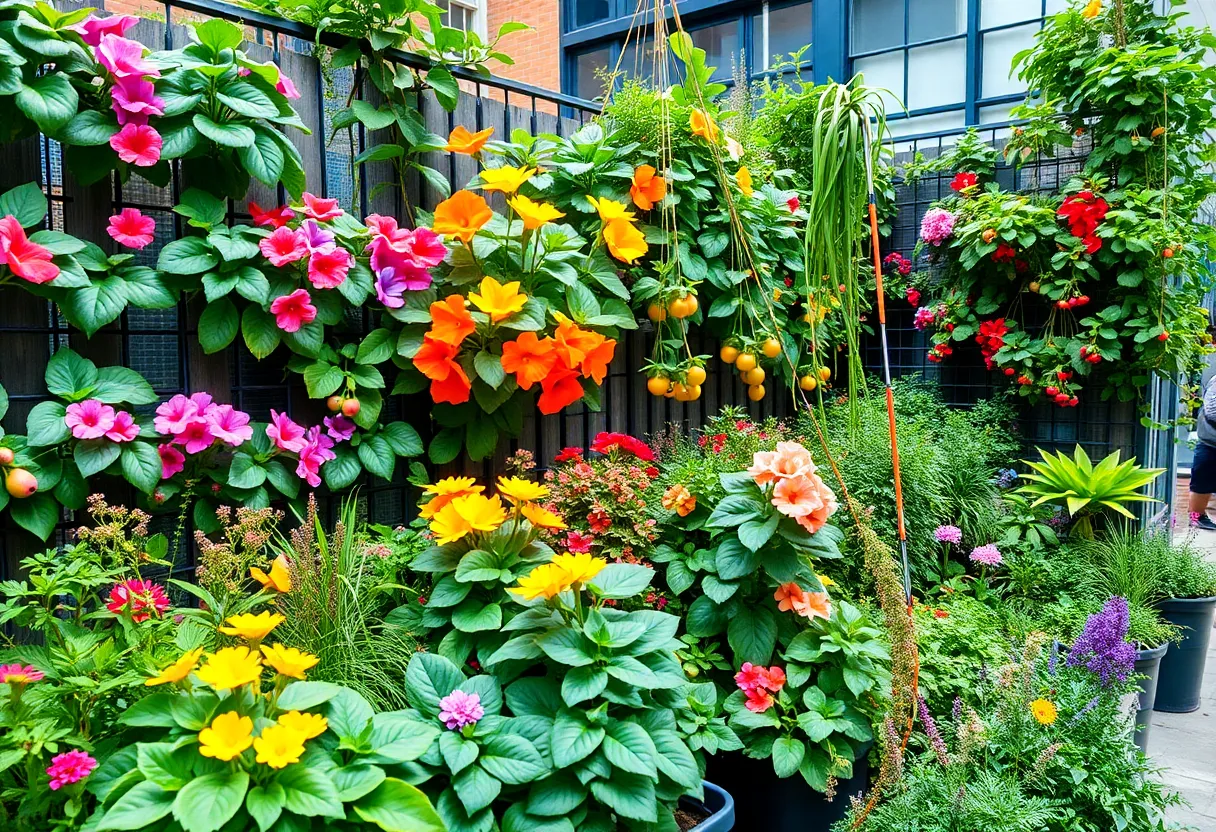10 Inspiring Tips for Maximizing Your NYC Garden’s Potential
Transforming a limited urban space into a thriving garden in New York City demands thoughtful planning, strategic use of resources, and innovation. Given the complexities of city environments—such as weight restrictions, limited sunlight, and space constraints—gardeners must leverage targeted techniques to optimize growth and productivity. This guide emphasizes actionable strategies to enable you to create a lush, functional, and sustainable garden regardless of your urban setting.
1. Embrace Vertical Gardening
Vertical gardening is essential for maximizing limited square footage. Installing trellises, wall-mounted planters, or hanging baskets allows plants to grow upward, freeing ground space for additional crops or ornamental plants. This approach is especially advantageous on balconies and rooftops where horizontal space is scarce.
Climbing plants such as tomatoes, cucumbers, and pole beans leverage vertical structures effectively, increasing yields per square foot. Additionally, vertical gardening introduces visual interest and can serve as a privacy screen in densely populated areas.
2. Choose Lightweight, Durable Containers
Selection of containers plays a pivotal role in urban gardening. Opt for lightweight materials like fiberglass, plastic, or composite planters. These are easier to handle and relocate, particularly on elevated structures like rooftops or balconies where weight is limited.
Ensure that all containers feature adequate drainage to prevent waterlogging and root rot. Using containers with drainage holes or layering with gravel can promote healthy root systems. Proper container choice can ease maintenance while safeguarding structural integrity.
3. Select Appropriate Plant Varieties
Choosing suitable plant varieties is critical for successful urban gardening. Dwarf and compact cultivars of vegetables, herbs, and fruits are best suited for containers. Understanding plant maturity and growth habits ensures they fit comfortably within limited dimensions.
Native plants warrant particular attention, as they are naturally adapted to local environmental conditions. This compatibility results in less maintenance, reduced need for supplemental nutrients, and better resilience against pests and diseases.
4. Implement Efficient Watering Systems
Water management significantly impacts plant health. Installing drip irrigation or utilizing self-watering planters ensures consistent moisture levels, minimizing water waste. These systems reduce the hands-on time required for watering and deliver water precisely to roots.
Automation through timers can further optimize watering schedules, especially during busy periods or adverse weather conditions. Proper hydration prevents stress, promotes vigorous growth, and enhances overall productivity of your urban garden.
5. Incorporate Reflective Surfaces
Reflective materials, such as white-painted trellises, light-colored walls, or reflective mulch, amplify available sunlight. They bounce additional light onto plants, compensating for shaded areas or limited sunlight hours common in urban environments.
Increased light exposure enhances photosynthesis, accelerates growth, and improves crop yields. Strategically positioning reflective surfaces near shaded plant zones can make substantial differences in overall garden vigor.
6. Utilize Vertical Growing Systems
Beyond basic vertical planting, advanced vertical gardening systems offer modularity and scalability. Wall-mounted pocket planters, stackable containers, and fabric wall covers optimize space and facilitate organization.
Supporting climbing plants with proper trellises or cages improves air circulation, which reduces fungal infections and pests. These systems enable better plant management while doubling the planting area within the same footprint.
7. Practice Companion Planting
Adopting companion planting strategies enhances plant health and pest resistance. Certain plant pairings, such as basil with tomatoes, provide synergistic benefits including pest deterrence and flavor improvement.
Research specific companion combinations suited to the plants you’re cultivating. This natural pest management reduces reliance on chemical controls and promotes a balanced garden ecosystem.
8. Create Defined Pathways
Establishing clear pathways using materials like gravel, pavers, or stepping stones facilitates access for maintenance, harvesting, and inspections. Well-defined paths prevent soil compaction and protect plant roots from unnecessary disturbance.
Aesthetically, pathways add structure and visual appeal, creating an inviting environment. Organization simplifies routine tasks, saving time and reducing accidental damage to plants.
9. Incorporate Edible Landscaping
Edible landscaping blends aesthetic and functional elements. Integrating herbs, vegetables, and small fruit-bearing shrubs with ornamental plants produces a lush, edible environment.
This approach optimizes space by utilizing non-traditional planting areas, such as flower beds or ornamental containers, for food production. It promotes sustainability and provides fresh, homegrown produce with minimal effort.
10. Engage with the Community
Participation in local garden clubs, workshops, and plant exchanges expands your knowledge base. Community engagement fosters resource sharing, offers support, and inspires innovative ideas.
Collaborative efforts can help overcome common urban gardening challenges, such as pest control or seasonal limitations, by pooling collective expertise and resources.
Conclusion
Maximizing your NYC garden’s potential demands focus on tailored strategies suited for dense, weight-restricted, and shaded environments. Implementing vertical gardening, selecting appropriate containers, and embracing efficient watering techniques form the foundation of a successful urban garden. Coupled with thoughtful plant selection, reflective surfaces, and community engagement, these tips help create a productive, sustainable green space.
Through strategic planning and targeted practices, even the smallest NYC outdoor spaces can transform into lush, functional, and aesthetically pleasing gardens that enhance your quality of life and contribute to urban sustainability.
Author: STAFF HERE NEW YORK WRITER
The NEW YORK STAFF WRITER represents the experienced team at HERENewYork.com, your go-to source for actionable local news and information in New York, the five boroughs, and beyond. Specializing in "news you can use," we cover essential topics like product reviews for personal and business needs, local business directories, politics, real estate trends, neighborhood insights, and state news affecting the area—with deep expertise drawn from years of dedicated reporting and strong community input, including local press releases and business updates. We deliver top reporting on high-value events such as New York Fashion Week, Macy's Thanksgiving Day Parade, and Tribeca Film Festival. Our coverage extends to key organizations like the Greater New York Chamber of Commerce and United Way of New York, plus leading businesses in finance and media that power the local economy such as JPMorgan Chase, Goldman Sachs, and Bloomberg. As part of the broader HERE network, including HEREBuffalo.com, we provide comprehensive, credible insights into New York's dynamic landscape.





